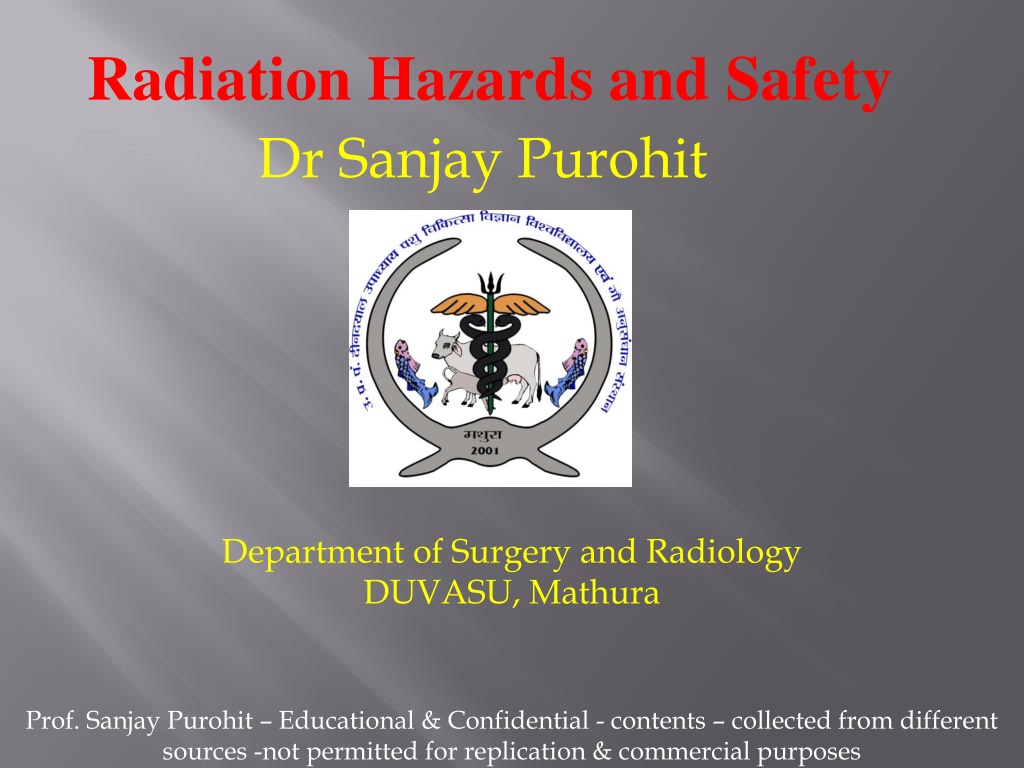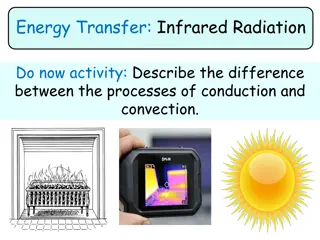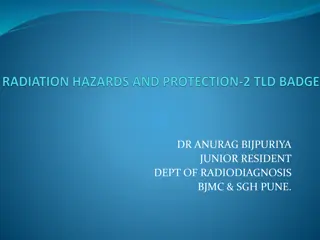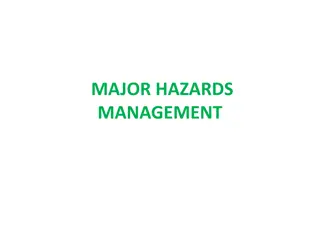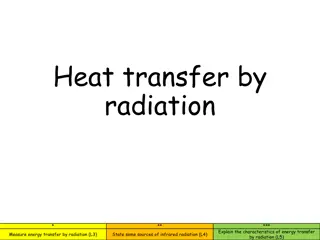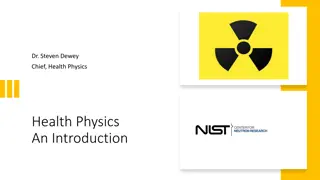Radiation Hazards and Safety in Medical Practices
Understanding the effects of radiation exposure on different body parts, from early effects on highly mitotic cells to late effects like carcinogenesis and cataractogenesis. Emphasizing the importance of minimizing exposure through the ALARA concept and protective measures for patients, fellow workers, and oneself in radiology departments.
Download Presentation

Please find below an Image/Link to download the presentation.
The content on the website is provided AS IS for your information and personal use only. It may not be sold, licensed, or shared on other websites without obtaining consent from the author. Download presentation by click this link. If you encounter any issues during the download, it is possible that the publisher has removed the file from their server.
E N D
Presentation Transcript
Radiation Hazards and Safety Dr Sanjay Purohit Department of Surgery and Radiology DUVASU, Mathura Prof. Sanjay Purohit Educational & Confidential - contents collected from different sources -not permitted for replication & commercial purposes
Early Effects Cells having high mitotic activity are most radiosensitive 1. Skin 2. G.I tract 3. Red bone marrow 4. Oropharynx 5. Testes 6. ovaries
Skin lesions affects the basal cells 1. Skin erythema (Reddening) 2. Thinning of skin 3. Blistering 4. Poorly healing ulcer 5. malignant
G.I Tract-- Loss of epithelium & impaired renewal leads to diarrhoea Testes affects spermatagonia Ovaries mature follicle Oropharynx- moderate dose 1. Reddening & swelling of laryngeal lining 2. White diptheroid membrane epithelite 3. Large dose slow healing ulceration & fibrosis
Red bone marrow 1. WBC count drops in 2 days 2. Platelets by 6 days 3. RBC by 110 days
Late effects In High dose 1. Carcinogenesis 2. Cataractogenesis 3. Life-shortening
Low dose effects 1. Somatic-- Carcinogenesis 2. Genetic-- a) Gene mutation b) Chromosomal aberrations
ALARA concept As Low As Reasonably Achievable Reducing exposure limits further than recommended by balancing of benefits vs cost Planning radiology department protection Promoting awareness within department
Patient Fellow workers Self
Roentgen (R) used for measurements in air Rad (radiation absorbed dose) used for patient dose purposes Rem (radiation equivalent man) used for worker protection purposes
Traditional SI Units Roentgen Coulombs/kg of air Rad Gray (Gy) Rem Sievert (Sv)
Occupationally exposed workers Annual: 5 rem (50 mSv) per year (ED) Cumulative: 1 rem (10 mSv) times years of age General population .1 rem (1 mSv) per year
What is the dose limit for a pregnant technologist per month? What is it for the entire gestational period?
Radiation monitoring devices: 1. Pocket dosimeter 2. Film badges 3. Thermoluminescent dosimeter (TLD) badges
Pocket Dosimeter Resembles fountain pain with in-built ionization chamber & electrometer Adv- immediate reading Dis-adv easily damaged unreliable in inexperienced hands
Film Badges Dental film with copper & plastic filters with lead backing Adv 1. simple to use 2. Inexpensive 3. Readily processed 4. Permanent record Disadvantages Damageable Not reusable Lower sensitivity Error about 10 to 20 % Can be fogged by heat
TLD Badges Crystalline material trap electrons in crystal lattice which are released in form of light when heated in controlled condition. Measured by photomultiplier device Lithium fluoride is material used Advantages 1.Very small 2.Sealed in Teflon (less chance of damage) 3.Low exposure limit 4.Accuracy + 5% 5.Less sensitive to heat 6.Reusable worn after in 3 months Disadvantages Expensive No permanent record
Always wear a personnel monitor. Radiology personnel should not restrain patients. Sound radiographic exposure factors Cardinal rules of radiation protection: Time Distance Shielding 1. 2. 3. 4. Mobile fluoroscopy or C-arm
Fluoroscopy exposure patterns (without tower drape shields in place)
Fluoroscopy exposure patterns (with tower drape shields in place)
Bucky slot cover Lead drape .5 mm lead apron Exposure limit: 10 R/min
Minimum repeat radiographs 1. Clear instructions Positioning and exposure factors
1. Minimum repeat radiographs 2. Correct filtration Inherent and added 2.5 mm Al total
Close four-sided collimation: One of the best ways of reducing patient exposure! (Remember divergence of x-ray beam.)
1. Minimum repeat radiographs 2. Correct filtration 3. Accurate collimation Types of collimators Manual type Positive-beam limitation (PBL)
1. Minimum repeat radiographs 2. Correct filtration 3. Accurate collimation 4. Specific area shielding Shadow shields Contact shields
Gonadal contact shields 1 mm lead equivalent Reduces dose 50% to 90%
1. Minimum repeat radiographs 2. Correct filtration 3. Accurate collimation 4. Specific area shielding 5. Protection for pregnancies
Protective Measures 1. Exposure time total dose to a person for particular rate is directly proportional to exposure time 2. Distance Longer the distance less is exposure 3. Lead barrier thickness of lead barrier is stated in half-value layer (Lead apron, Gloves, Goggles etc)
Dose reduction in Radiography Beam filtration Aluminium Beam collimation Gonadal shielding High speed image receptor Optimum film processing High kV Careful technique selection
